My visit to Dominica was supported by the national tourism board
Tears infiltrate my eyes as the ragged road pummels the car’s suspension. “It will be worth it”, Alex, my driver-turned-new-best-friend, gleefully calls from upfront. “It’s my favourite beach in Dominica”.
But it was neither the bumpy dirt track nor the eye-itching dust that was causing my bleary eyes; rather, the moment to utter farewell to this precious Eden was fast approaching. Soon, a small twin prop would rip me away from this wild, rugged, and ravishing nation — and almost certainly, a fragment of my heart would remain behind.
Rarely does a place compel me to cry at goodbye, but as I’d learned over the previous nine days, the Commonwealth of Dominica is as unusual as departing tears. Islands like these are fast fading in a tide of over-tourism, an ironic fact given the very reasons we trumpet travel — arresting landscapes, chummy conversations, untamed wilderness and the awe of authentic adventure — are all writ large here.
Equally uncommon was the manner in which this lush speck in the eastern Caribbean Sea had taken mere moments to earn my adoration. And Alex, now wrestling the wheel to swing into a pristine palm-laden bay, had been an influential part of that all-important first impression.
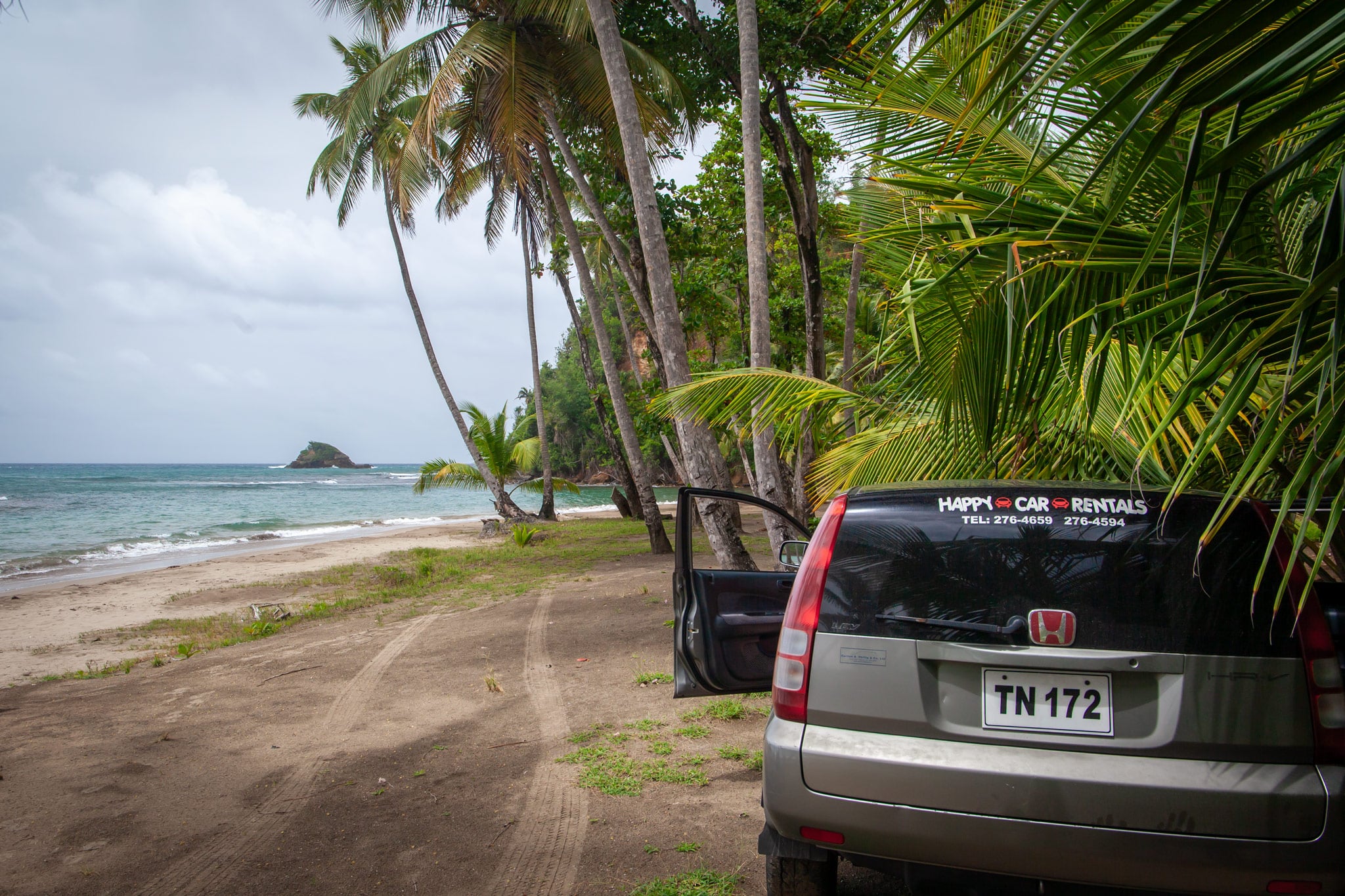

A verdant welcome
“Honking is good; honking is friendly,” Alex hollers over the rhythm of the horn as we ascend into cloud-reaching peaks. Villagers frantically wave at my driver — who I am starting to assume is some kind of local superstar — and with each hand raised, he dutifully shoots back a short toot. Behind us, the minuscule airport shrinks into the distance, rampant rainforest and wild river-coated terrains enveloping our vehicle.
Suddenly, Alex kills the engine. Signalling me to angle my ear outside the window, the squawk of a parrot echoes like a roar over the whispering breeze. The scent of lemongrass leaves lingers in the air, and almost on cue, the first drops of the day’s rain tumble. Inclining myself to be further out of the car, I breathe it all in, the humid air more intoxicating than any manmade substance.
Just thirty minutes after arriving in Dominica, I was feeling more in harmony with nature than I had all year. You don’t have to scour far for Mother Earth’s most exceptional work here; it’s everywhere and all-encompassing.
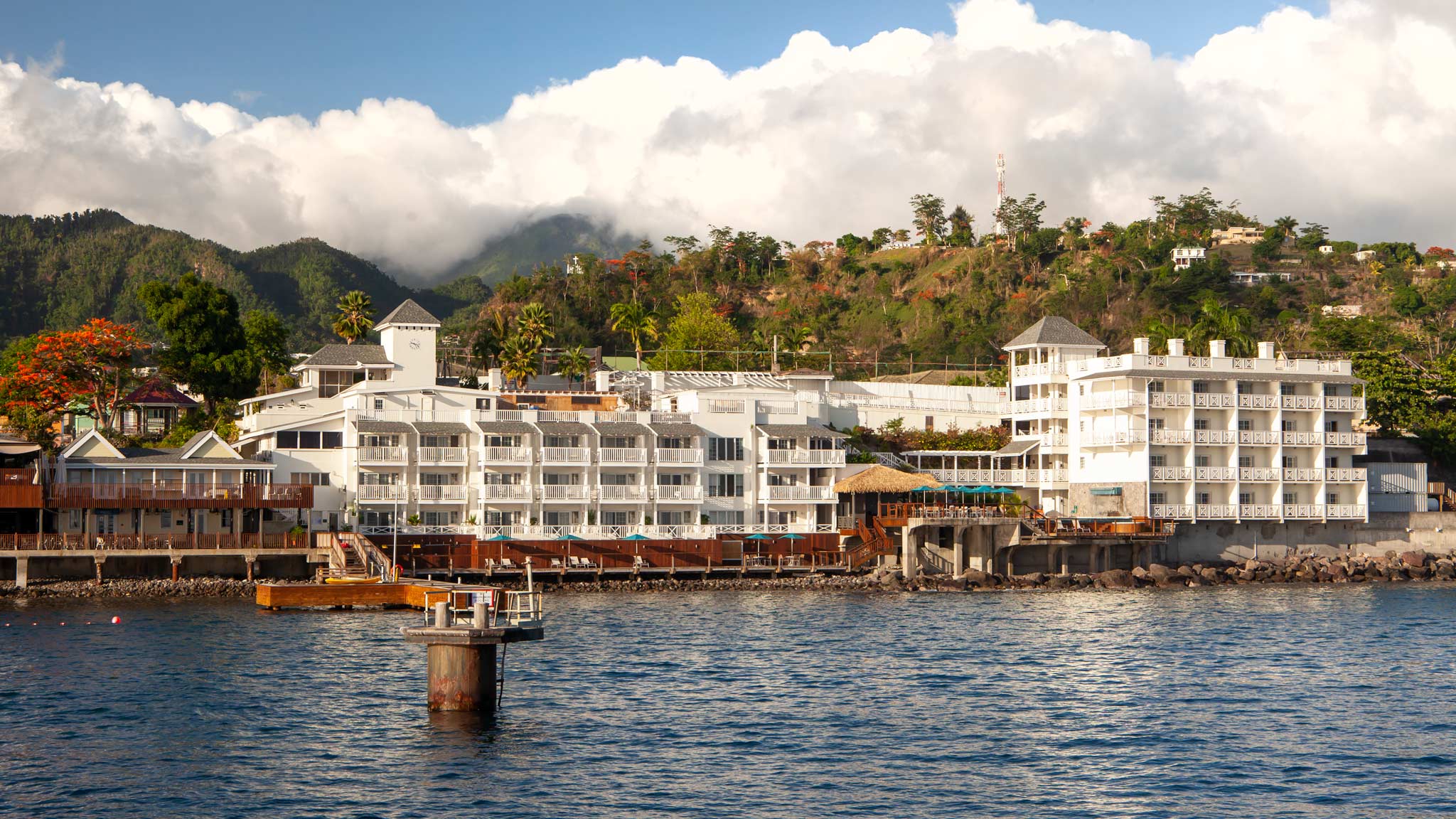

Pulling into Roseau, Dominica’s mountain-backed, pint-sized capital on the island’s west, Alex welcomes me to my first temporary home, the historic Fort Young Hotel. Check-in is swift, and while I sip on a welcome drink — the first of what I assume will be many locally distilled rum punches — I discover that too-cool, cheeky-grinned Alex was, in fact, one of the very few people on the island who wasn’t a film star. He tells me most other islanders made their silver screen debut when the cast of Pirates of the Caribbean had descended on the island a few years back, roping plenty of the 70,000-odd residents into background roles.
I glance around, and my next question answers itself: these cinematic views are more than Hollywood-worthy
From the balcony of my sea-facing suite, the sparkling waters seem close enough to touch. I’m half tempted to plunge in — the hotel doubles as a scuba school, after all. But unlike a typical luxury Caribbean resort, there’s no private beach at Fort Young; instead, a diving pier delivers you directly to the Caribbean Sea. And rather than being far-removed from the day-to-day of Dominica’s life, the city’s colour and character are right on the doorstep.
Keen to grab a light bite before calling it a night, I venture to the hotel’s high-roofed, all-wooden restaurant in hunt of Callaloo, a vegetable-loaded soup that serves as Dominica’s national dish. A special scuba open day has taken over the pool, allowing local kids to master the basics of diving. Spoon in hand, I grin with great delight; I’m not going to have to try hard to slip into a resemblance of local life here.
Subued by stew and a second (okay, third) rum punch, I push the balcony doors wide before sinking into the silky bed. The sea shimmers under the moonlight while stars flicker in the dim night sky. Feeling like I’m cocooned in a cruise cabin, the soothing tide lullabies me into dreams of breaching sperm whales and dancing dolphins.
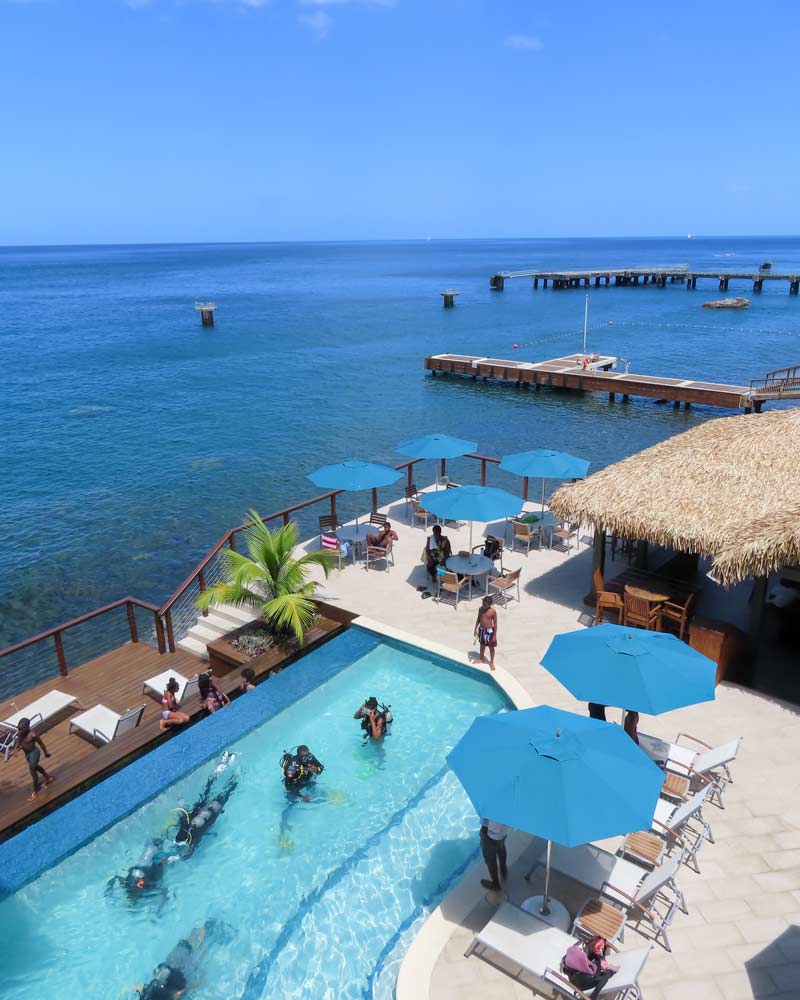

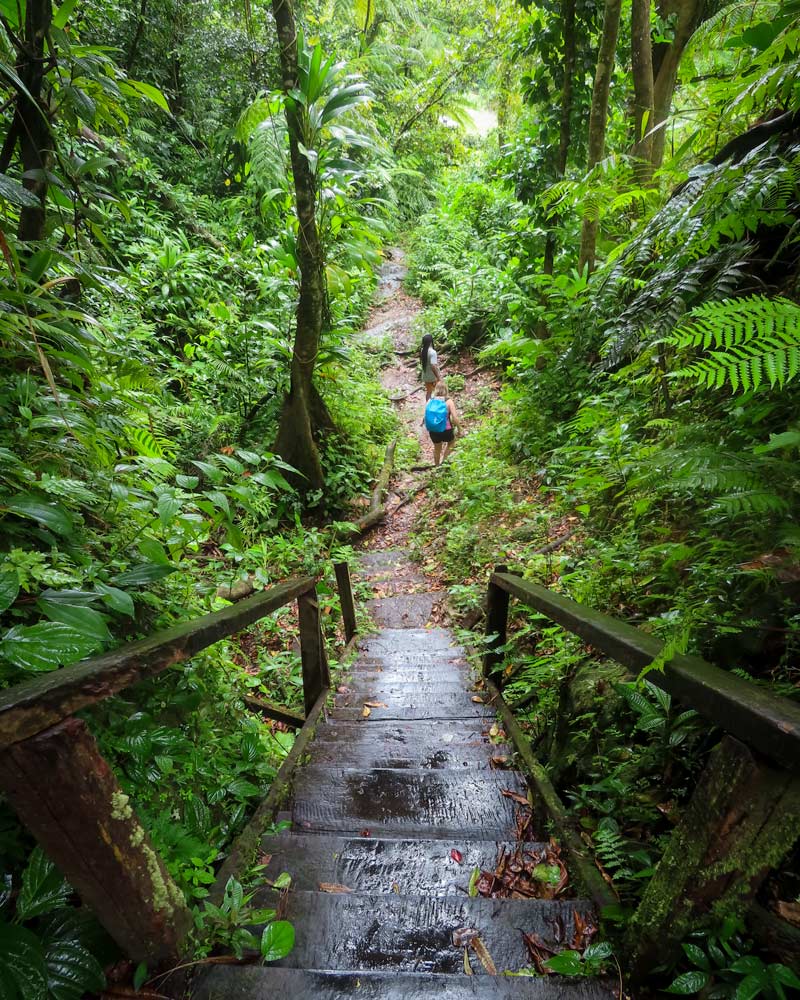

Into the Eden
“No cocktails. No lying on the beach here. No-no-no.” my hardy hiking guide, Marvin, chortles as we hide from heaven’s downpour under a somewhat leaky canopy. “Strap your boots on, and let’s go dive in some pools”, he booms above the rain’s racket.
It was at this moment I knew Dominica was going to live up to its moniker as ‘The Nature Island’. While other Caribbean destinations promise pricey pampering and lazy days flitting from beach to bar, Dominica’s allure is more adrenaline than all-inclusive. It’s the kind of place you come for multi-day hikes, pinnacling in makeshift rum shacks rather than to top up your tan.
And here, in the chasms of the lush UNESCO-listed Morne Trois Pitons National Park, I was in my element. Tropical overgrowth blankets the valley’s terrain in all directions, while the occasional fumarole acts as a reminder of the island’s volcanic nature. Marvin strides ahead, guiding me through an unexpected degustation menu of the island’s fauna.
“These taste like crisp green apples”, he advises, eagerly passing me an average-looking leaf. “And these,” he continues, pausing for a moment at a ruby-hued berry tree, “these are safe to eat”.
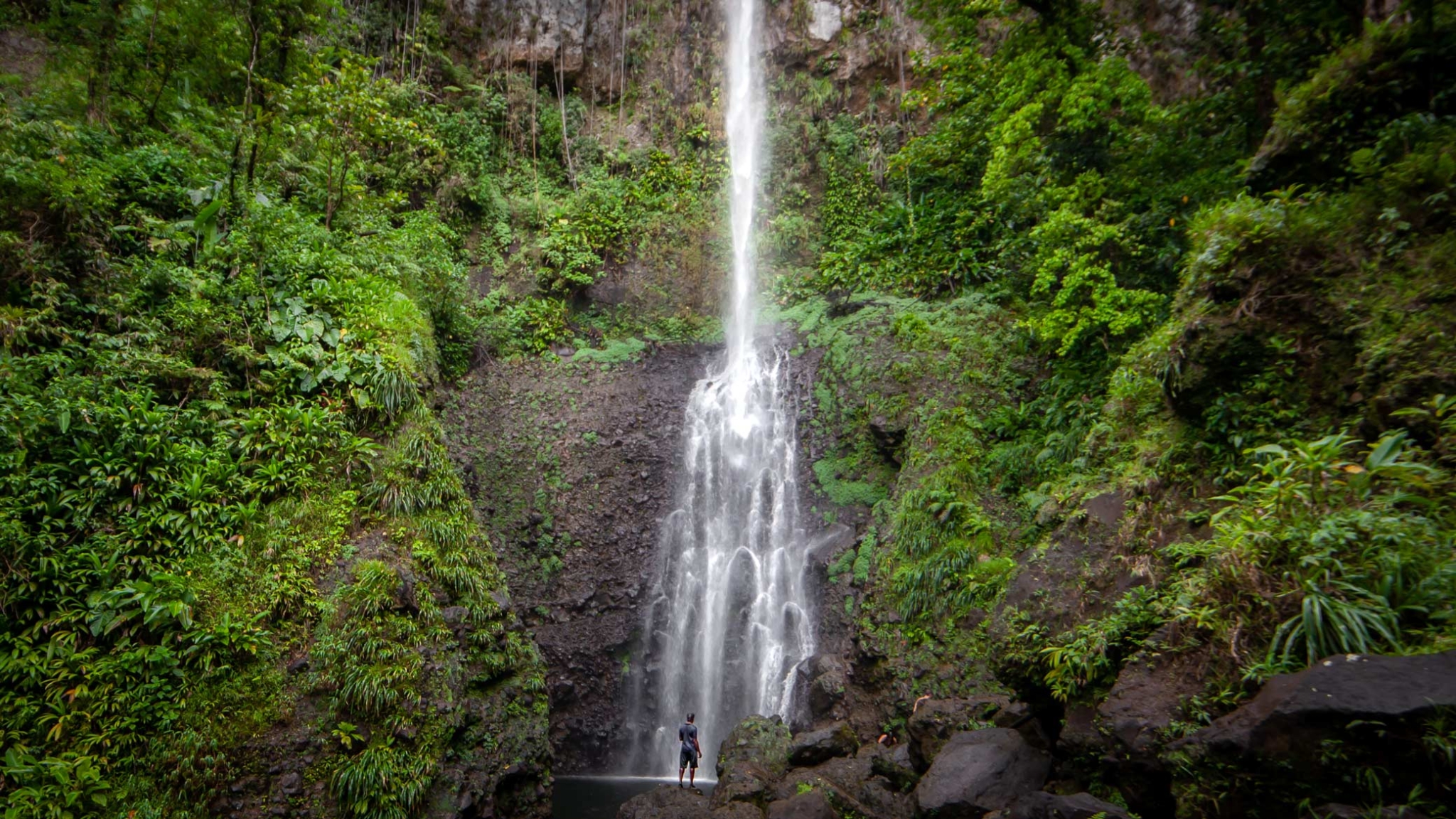

Marvin dismisses our masterclass in wild fruit salad making, and we resume our rainforest trek for another hour or so until towering Middleham Falls comes into view. Getting closer, a slight yet stealthy stream of water crashes down from some 60 metres overhead, the wind guiding a welcome and refreshing mist in our direction. At the cascade’s base, an even more refreshing swim beckons, although it seems the only other two hikers we’ve witnessed so far this morning have got first dibs in one of Dominica’s five-star showers. Awaiting our dip, I bask in the bewildering feeling of having this moment of equilibrium almost all to myself.
Reading my mind, Marvin informs me it’s not always this tranquil, particularly when the cruise ships dock. Thankfully, for more intrepid travellers, at least, liners anchor far less regularly here than on more fabled nearby isles, with itineraries often bypassing Dominica in favour of easier-to-market soft sands. The lack of direct international flights — until a Miami route launched in 2023, there were only inter-Caribbean connections — dictated by the diminutive runway also ensures these ethereal scenes remain relatively undisturbed.
Continuing onwards and upwards, we track part of the Waitukubuli National Trail. Named after one of the island’s original names, bestowed by the indigenous Kalinago people, this is the Caribbean’s first long-distance trek. Traversing some 185 kilometres of far-flung fauna and flora over 14-day sections, it’s certainly not for the faint-hearted — Dominica’s topography is more that of a mountain soaring from the sea than a typical island.
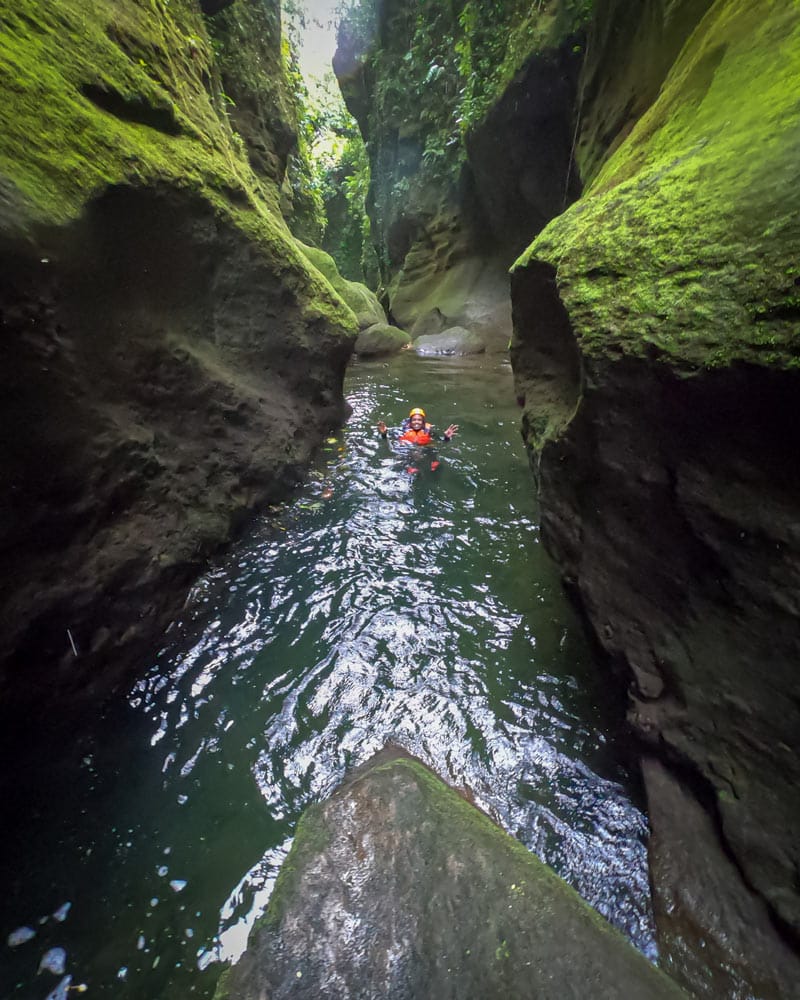

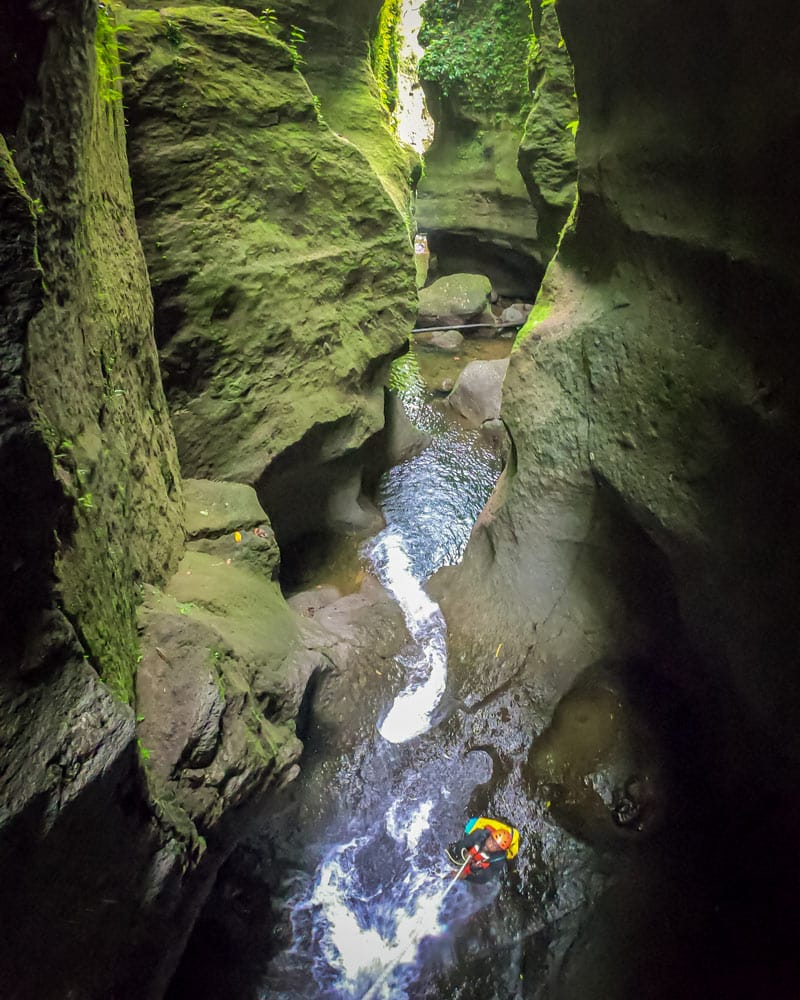

Adventures over all-inclusive
The next morning, wrapped in a wetsuit tighter than the crevices I was about to scrape through, I’m back in class. This time, for a lesson on launching myself from precipices rather than studying which berries won’t kill me. Up front, Berani from Extreme Dominica is demonstrating ropes and rappels while declaring how the island’s rainforests are as equally suited for scaling as roaming and waterfalls.
Approaching the moss-coated Ti Tou Gorge with a mix of awe and apprehension, I tentatively press myself through a tight fissure in the volcanic rock. If I’m honest, canyoning in the Caribbean was never really a box on my beach holiday bingo card, but I was adamant acrophobia wasn’t going to get the better of me.
Peering over the charcoal-grey edge, a chilling stream of water trickles over my feet, plunging into the gorge some thirty feet below. From here, it’s near impossible to ascertain how deep the opaque pool directly below me is, but a shout from far down reassures me that it’s more than safe. Teetering on the edge for a little too long, I hear Berani’s voice boom through the gorge, commencing a countdown. “3, 2, 1, jump!” he bellows above the soundtrack of gargling water, the final word echoing throughout the valley.
With my eyes closed, I blurt out a profanity and take a leap of faith. Seconds later, I’m fully submerged in the chilly waters, and my swear words shift into underwater screams of joy. As I push my helmeted head back above the surface, Berani greets me with a high five.
He had been right, of course; that was an unforgettable adventure. Quickly, I haul my smitten self onto the subsequent ledge, excitedly slinging myself down the next zip wire — it was time to work up an appetite.
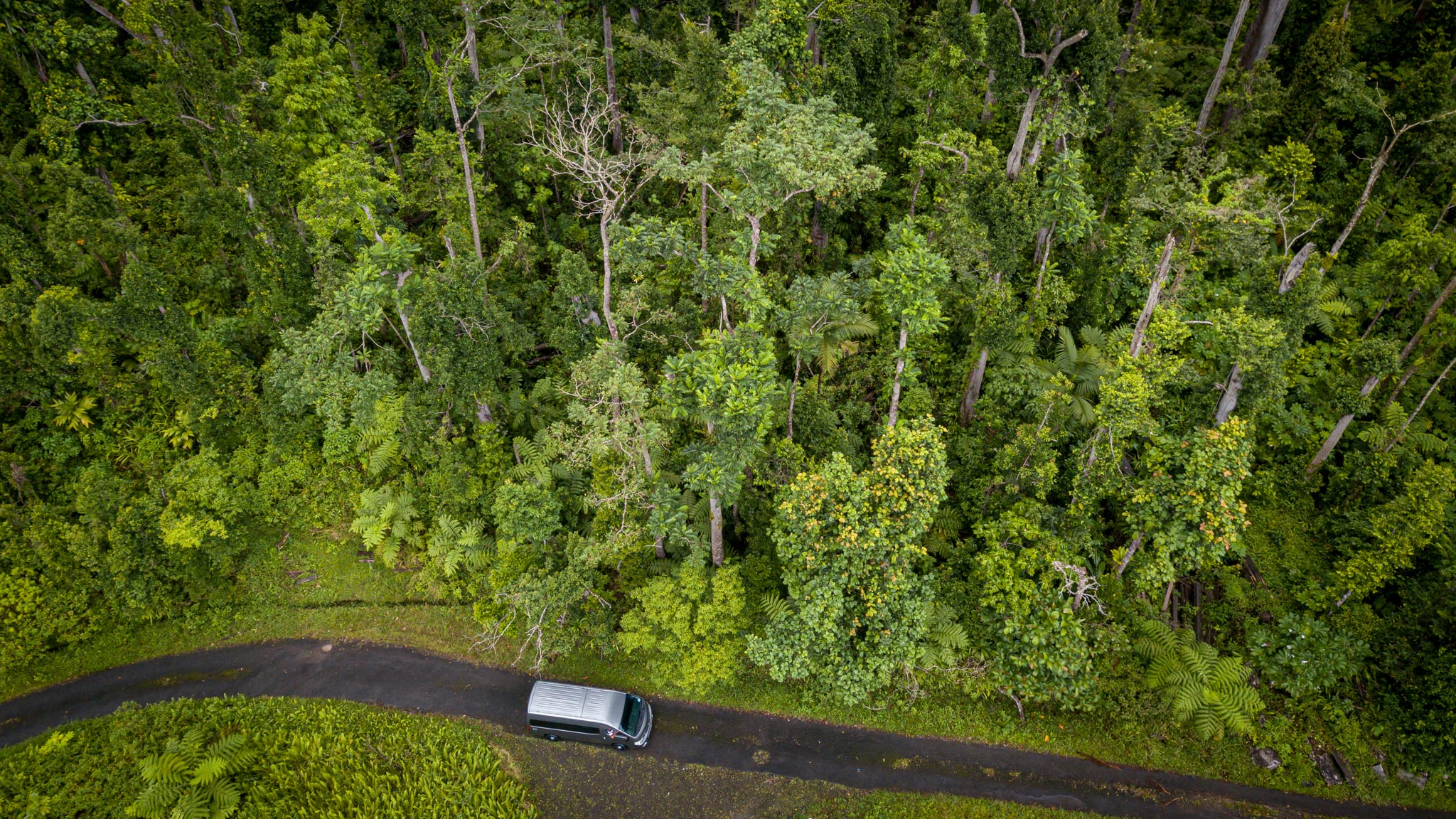

“Shrimp, chicken or fish?” questions a furrowed yet forgiving face peeking through the window of the River Rock Cafe cabin. By now, I’m well aware that many of Domincia’s best restaurants don’t need menus, and I fire back my order without hesitation. On the terrace, a stone’s throw from the impressive twin cascades of Trafalgar Falls, the soundtrack of tumbling water and trilling birds provides for a tranquil lunch spot.
I lean back in my chair, wondering if anything can make this setting more perfect. The answer arrives in the form of flavoursome creole-sauce-coated freshwater shrimps washed back with creamy soursop juice.
Fueled and fizzled by the mid-day heat, I plump for an afternoon of soft adventure. Dominica’s 365 rivers — everyone keeps reminding me that there is one for each day of the year — and innumerable lakes aren’t just ripe for active exploits; they’re also rich in soothing properties. Closest are the sulphur springs of Wotten Waven, which, on arrival, disappoint. After the majestic nature-carved pools of this morning, the site of cement-circled baths overshadows any assurance of rejuvenation.
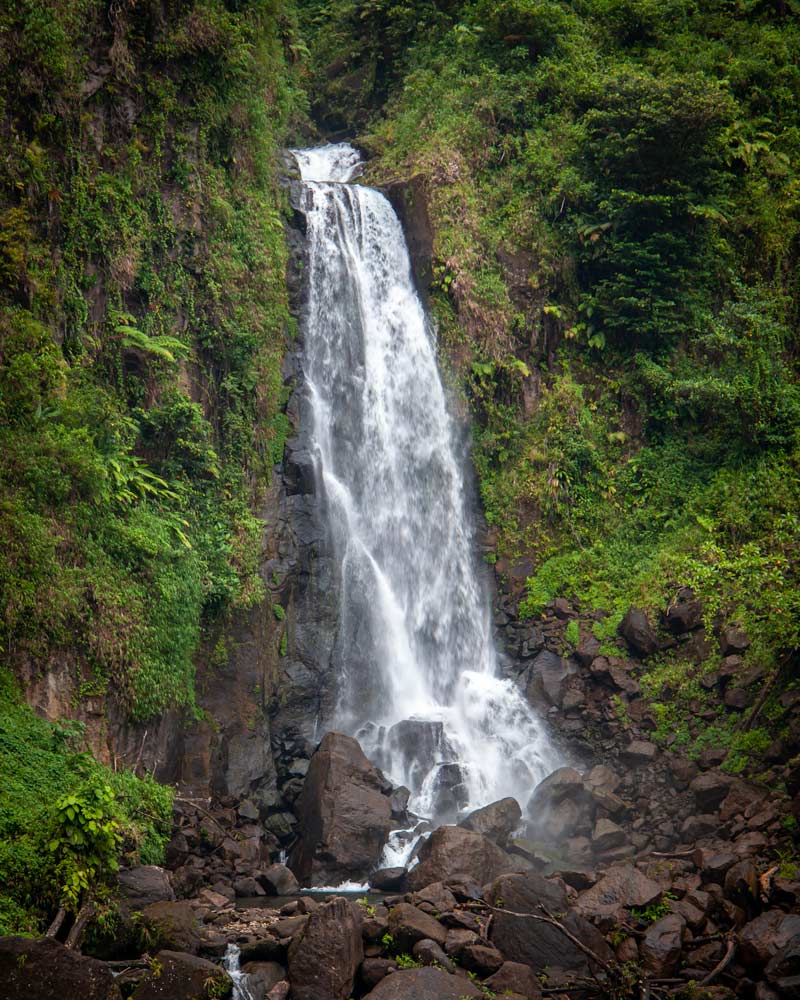

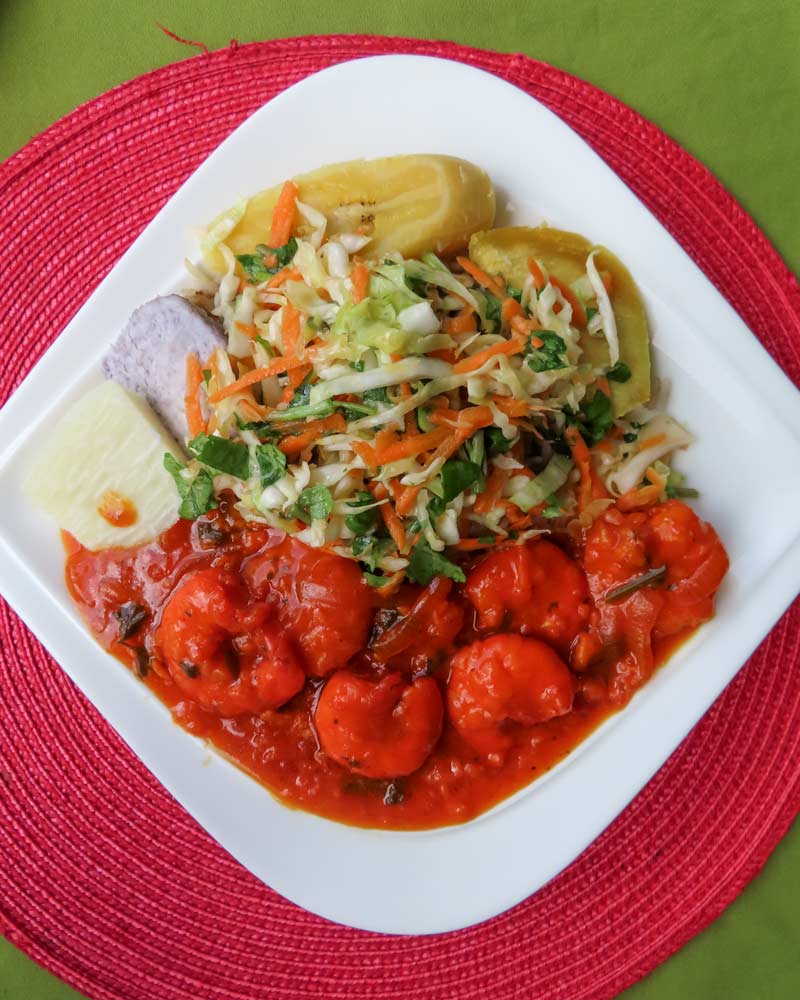

Instead, we climb deeper into the heart of Morne Trois Pitons to circle the Freshwater Lake Trail. Cloud and drizzle join us, shrouding the forest and sizeable body of water in a hazy mist, yet we still manage to track the ridge of this dormant volcano. I’d had high hopes of hiking to the infamous Boiling Lake, a grey, gurgling former fumarole that you certainly wouldn’t want to swim in, but sadly, time was not on my side.
En route back to Fort Young, Alex suggests a quick stop at Morne Bruce Lookout. High above Roseau, the city seems even more compact, a spectacular sunset starting to swallow the settlement. “You should try to make it to the Emerald Pool,” Alex suggests as I put my camera into overtime. “That’s the best spot for a refreshing plunge”, he chimes, striking a thumbs-up pose for the final photo of the day.
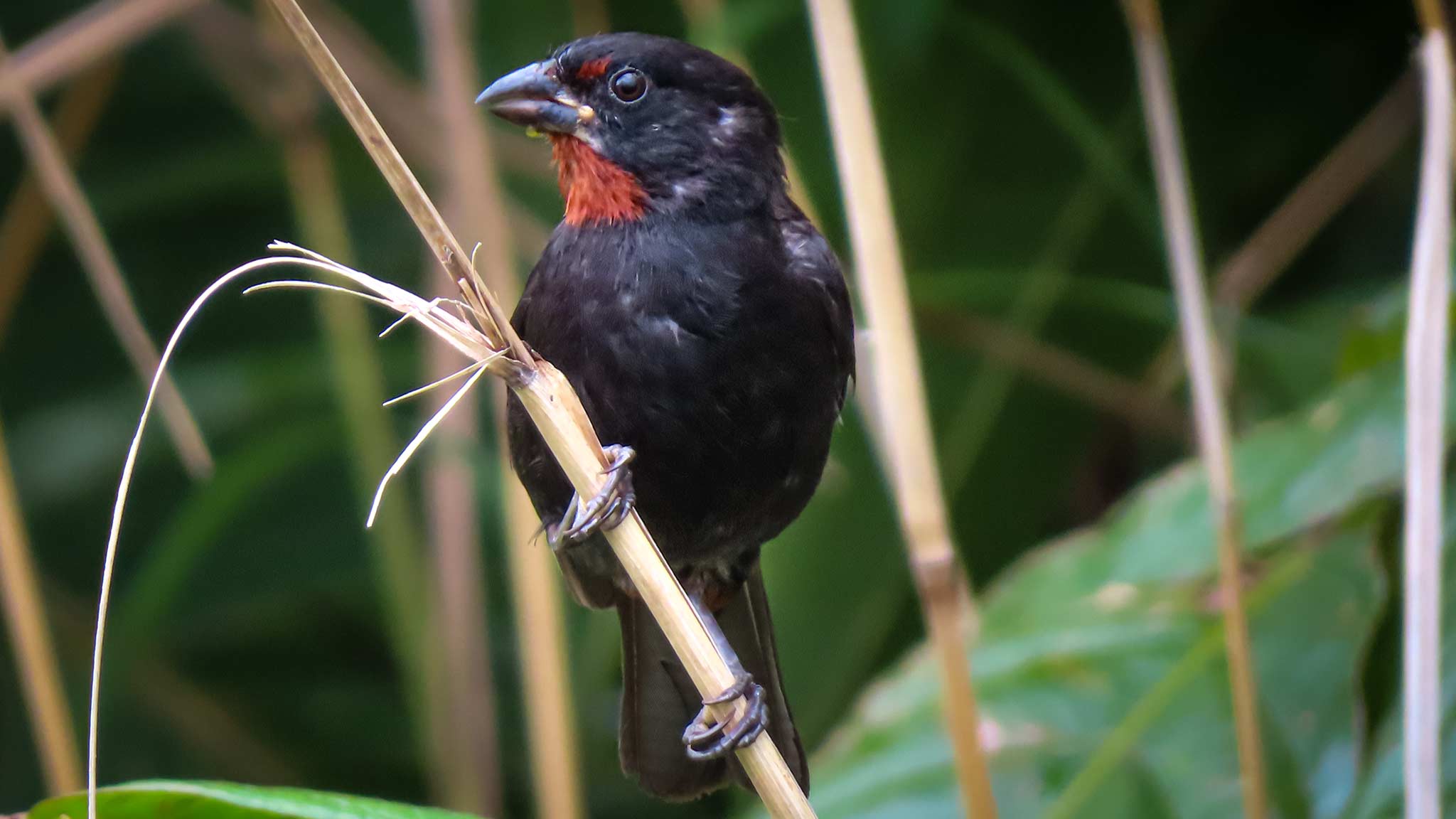

Sightings from the sea to the sky
“Look! It’s over there,” whispers Bertrand Jno Baptiste as I abandon my bicolours in favour of his far-reaching telescope. Squinting and refocusing, I finally glimpse what we’ve spent half the morning searching for: the endemic and ethereal purple-and-green Sisserou parrot. I remain silent in hopes that Dominica’s national bird will linger longer in the canopy across the valley, and for a few moments, it feels like she’s staring me straight down the barrel.
Footsteps ruffle on the leaf-coated trail behind me, and an enthusiastic voice breaks the stillness. “Dr Birdy’, a lady sings in an English accent, eagerly making a beeline for Bertrand. She recounts to our group how she had seen him present a talk at a bird-watching event in the UK the year before. An expert in all things winged, the nickname is unsurprising, and there’s no one I’d rather have serenading me with facts as we stroll the Syndicate Nature Trail.
Without any predators on land, the island’s exotic bird population remains steady, though some species are now classified as endangered. Sadly, the same can’t be said of Dominica’s mountain chicken frog. Once abundant and previously seen as a gastronomic speciality, the numbers of these croaking amphibians have fallen drastically in recent years. Dominica is the last remaining place on earth where the species can be found, and with less than two dozen still alive, efforts to avert extinction are critical.
But while wildlife in the interior might stay well hidden in the lush rainforest, it’s another story a few hundred metres off Dominica’s coast.
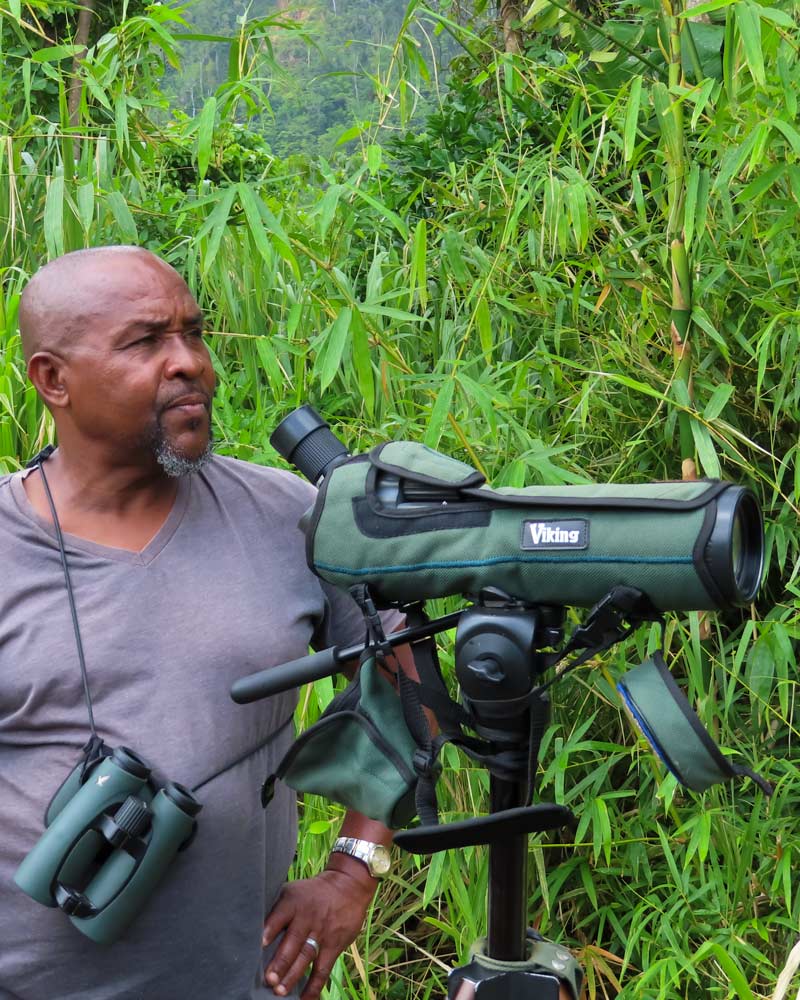

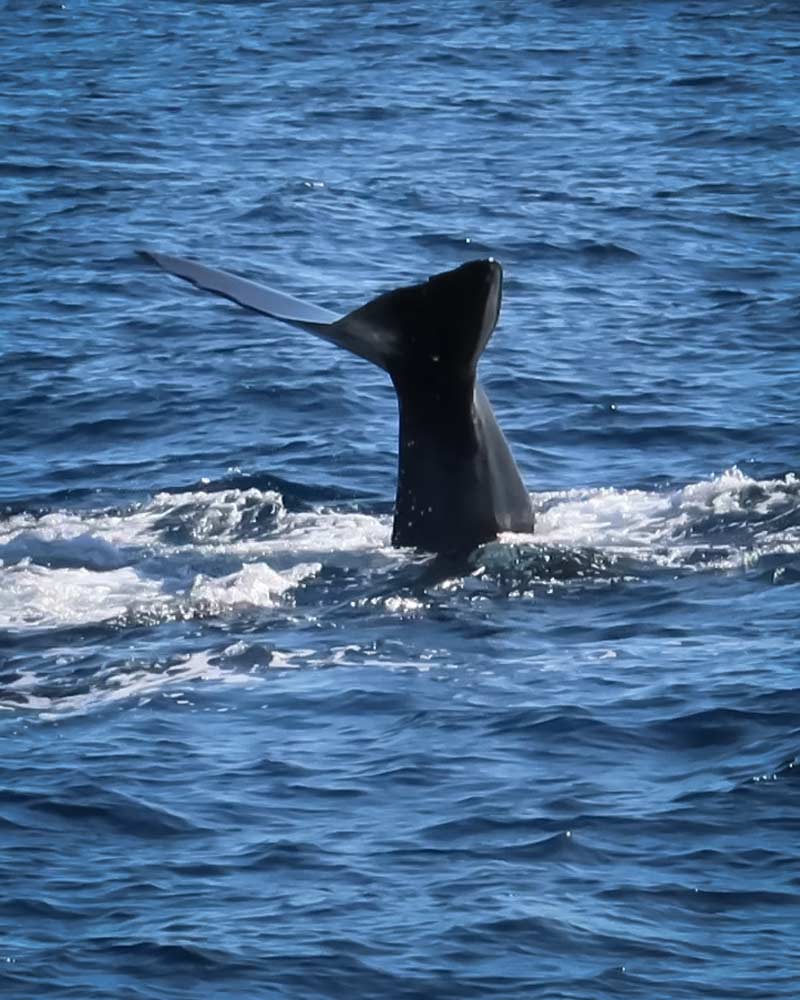

“Did you see that?” squeals a fellow passenger as a pair of breaching sperm whales descend back into the depths of the deep blue. Gawping and gleeful, my eyes continue scanning the lapping waters, and I’m quickly rewarded with a second sighting of playful dolphins.
As one of the only countries in the world to have a year-round resident population of sperm whales, your chances of witnessing these majestic mammals and plenty of other cetaceans in the wild are high. It’s one of the main reasons in-the-know travellers have flocked to Dominica for decades, especially between November and March.
Before our small craft had departed from spectacular Scotts Head, the starting point of popular scuba adventures in Soufrière Bay, we had been told about conservation efforts and Dominica’s rules for protecting marine life. Daily boat departures are capped, and ships have to stay well back from any whales. Most importantly, jumping overboard would not be tolerated — permits are required to swim anywhere near whales.
But as the two majestic whales return for another tail-wagging performance, no one seems to mind that they kept their distance; if anything, I feel good to be in a country that doesn’t seem intent on destroying itself. Nature seems a more important currency in Dominica than the dollar; hopefully, it will remain that way.
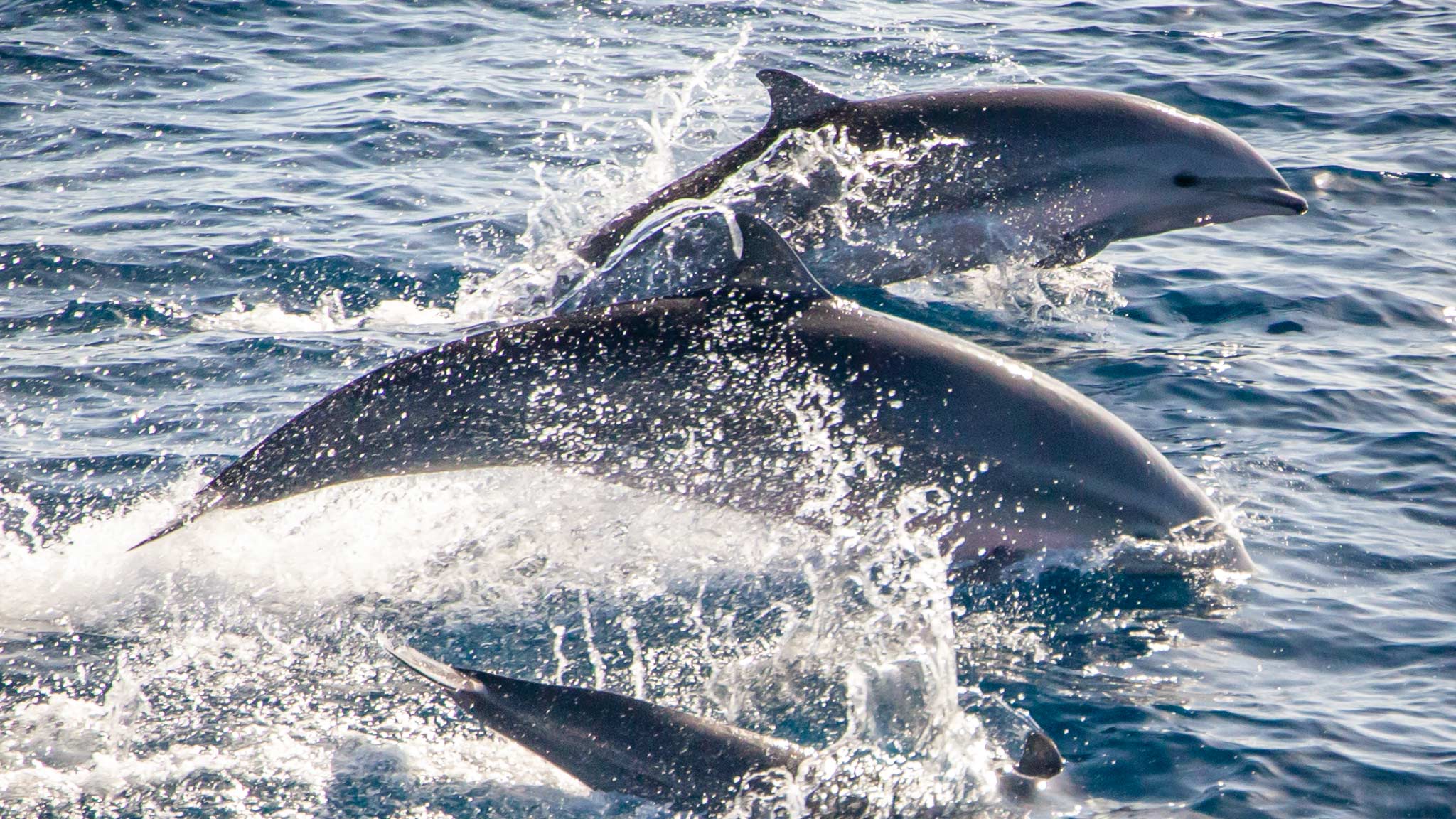

Indigenous lands
Dominica’s extreme mountains and isolated positions aren’t just an adventure playground — they’ve long offered both home and protection to the island’s first people, the Kalinago, and one of the best ways to learn about the traditions and culture of the indigenous community is to visit their territory.
Driving up the coast to the eastern side of the island, there’s no fanfare or fences as we cross the ‘border’ into the Kalinago territory. The same lush carpet of emerald green leads the way, though I do notice an abundance of yellow flags fluttering outside homes. Alex informs me they relate to the upcoming elections — the colour is the symbol of the Kalinago people — while the red and blue flags we’d seen elsewhere represent other political parties.
Arriving at one of the eight hamlets that make up the 1,500-hectare Kalinago territory, I’m eager to learn more about the the community and their history. Like many of the colonised islands in the Caribbean, Dominica was harrowed by the slave trade and slaughter, yet some of the local population managed to survive. It wasn’t any degree of kindness that led to some of Dominica’s first people being spared; the island’s topography and isolated mountains allowed the Kalinago people to hide and continue their life and culture on this otherwise ignored stretch of coast.
Still, only a small area of land was decreed to the Kalinago in 1903, a reminder of how much was seized by the Spanish, French, and British who conquered and pillaged this isle.
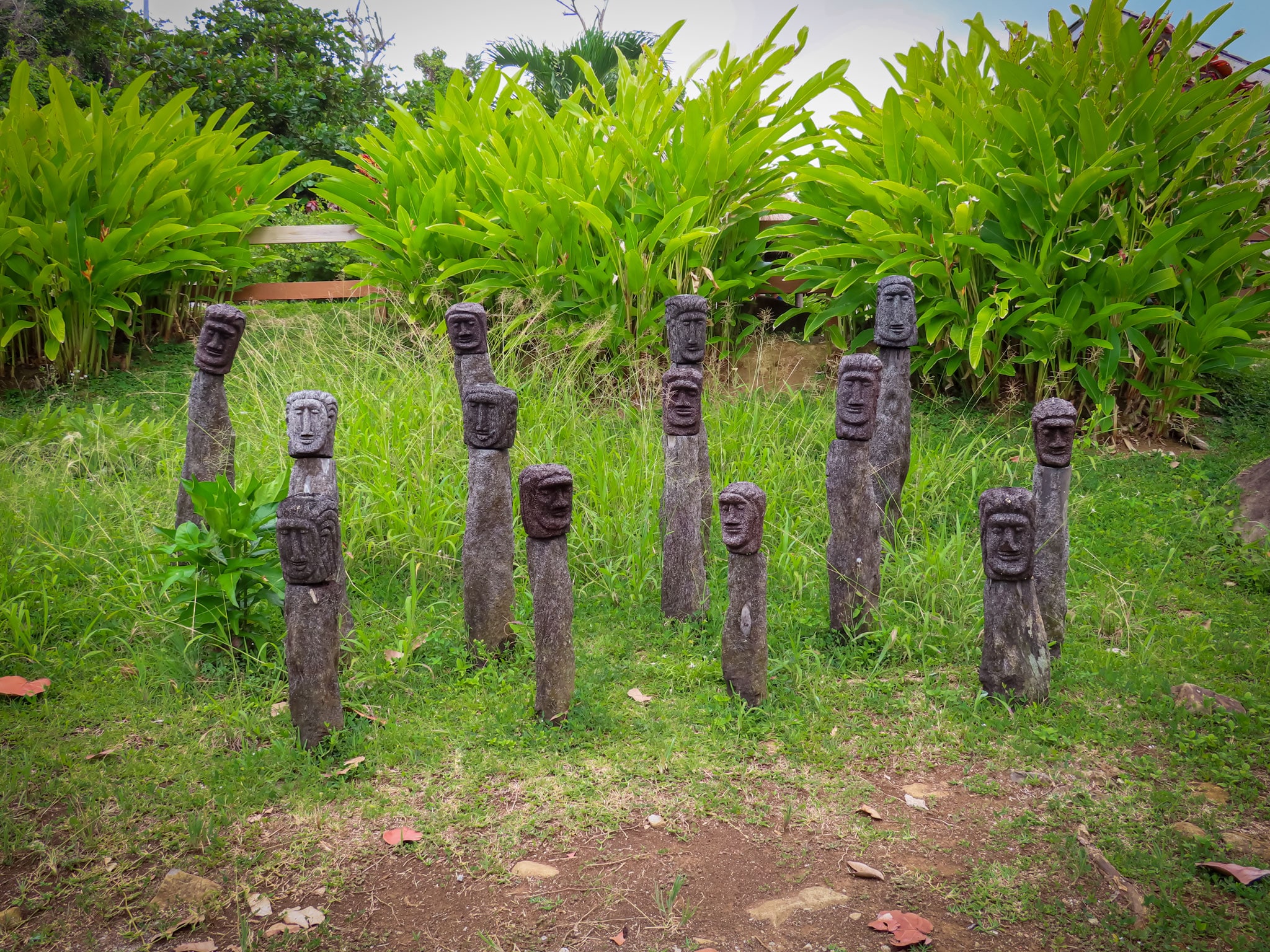

Walking around the Kalinago Barana Aute (the village by the sea), I’m taken on a tour of traditional outfits, thatched homes, weapons and stories from times long gone. With no cruise ships this month, the site is devoid of visitors, meaning I could decline dance performances and weaving workshops and instead opt for more intimate insight and unguarded one-on-one conversations.
In the visitor centre, I read about how the island was originally known as Ouitoucoubouli, then Waitukubuli before Christopher Columbus renamed it in 1493 with an unsurprisingly Latin and Christian name of Dominica (translated, it means Sunday, aka the Lord’s Day – the day he first sighted the island). However, it was the French who first truly colonised the islands. Further exhibits inform about how the Kalinago (formerly known as Carib Indians) ancestors came from Asia and across the Bering Straits before settling in the Orinoco River basin in South America. It was from here that the Kalinago travelled to become the first settlers of Dominica.
Justinian, a Kalinago guide, chats with me about the modern-day territory and local rules. Outsiders can’t buy property or land in this protected area, but of course, the Kalinago can live wherever they like on the island. She tells me that this means there are only around 3500 people still living on the territory and that recent reports suggest about 90% of the Kalinago people now have mixed heritage. Sadly, the indigenous language has nearly died out, with just a few phrases still in use and only the elders — one lady who is over 100 in particular — knowing the language skillfully.
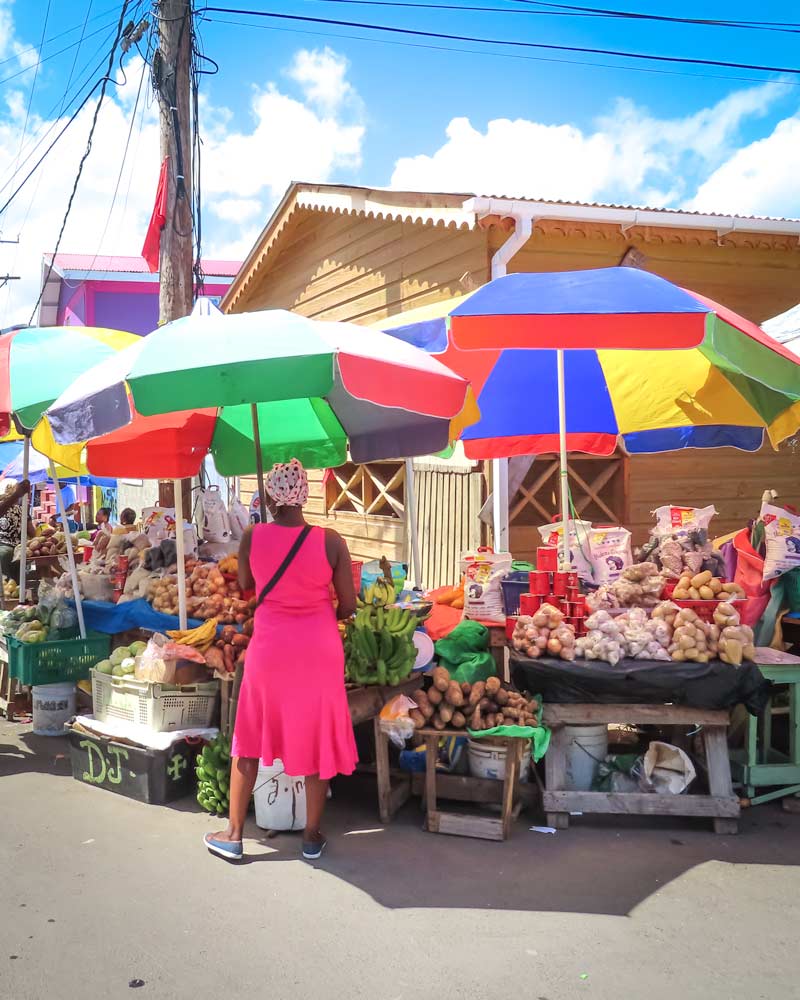

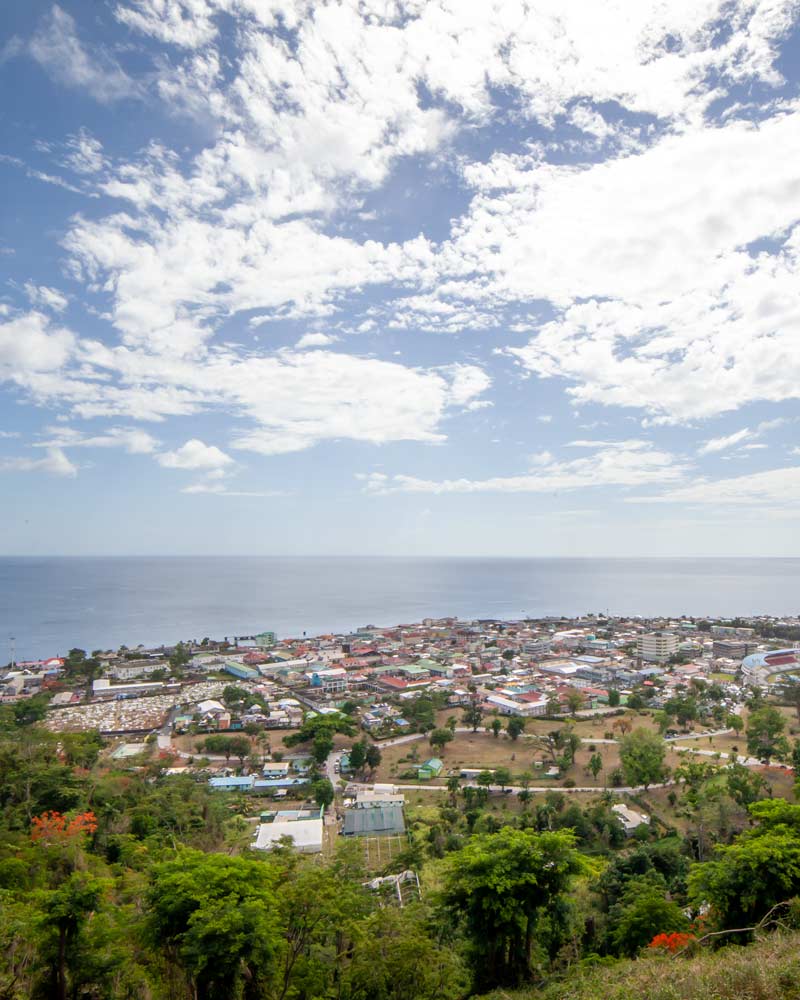

What is luxury anyway?
Begrudgingly, I drag my bags down to the reception desk of Fort Young, taking a whistlestop tour to say my goodbyes to the hotel team, who had treated me like family rather than a guest over the previous few days. It was Saturday morning and time to leave Roseau in favour of the west coast, but I was keen to see a little more of the island’s capital first.
Strolling the downtown streets one last time, colour and conversation were rife. Market day was well underway, and fresh fruits such as mangoes, bananas, guava and custard apples were laden high in the shade of rainbow-striped umbrellas. Stocking up on coconut tablet — sweet sugar and spice balls of shaved coconut I’d developed a fondness for, but my dentist would likely detest — I continue to the National Museum of Dominica to find it shuttered on weekends.
Roseau might not be the most attraction-laden city, but it had been good to me. The botanic gardens are serene if small, and there are enough atmospheric bars and restaurants serving local specialities, such as the invasive lionfish, to offer varied evenings. Alex had also advised me early on that it’s always best to ask for the ‘local drinks’ as these mainly rum-based berverages are billed in Eastern Caribbean Dollars, unlike the cruise-ship-ready menus in USD. While grateful for the advice, this had led to a few affordable hazy evenings.
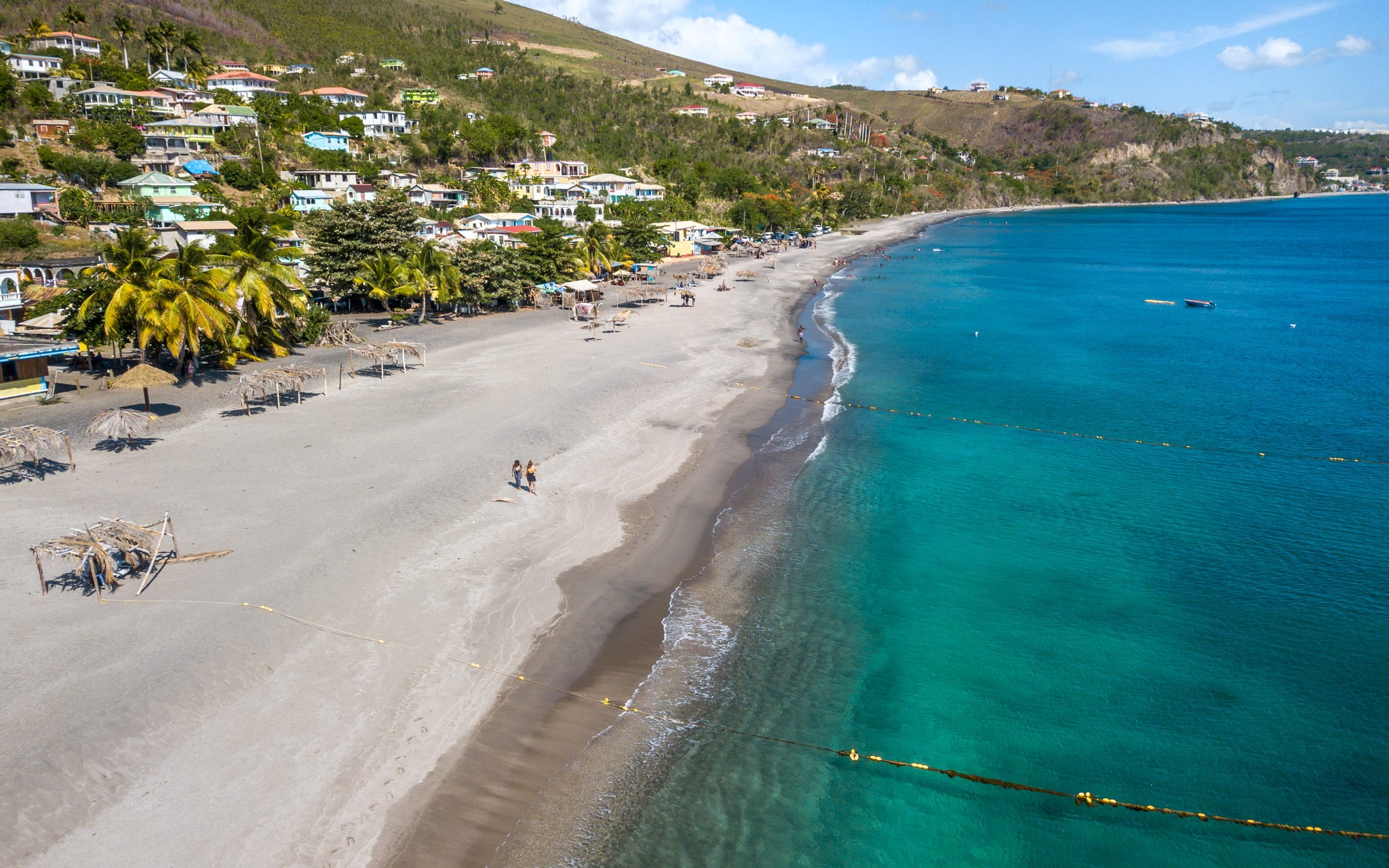

Driving up the west coast, we pass silver sand beaches, which quickly start fading into black shorelines as we get further north and deeper into the volcanic side of Dominica. Stepping onto the surprisingly soft black sands, which were being baked by the sun, I quickly forgot about Fort Young Hotel; Portsmouth, Dominica’s second city, was certainly anything but a consolation prize.
For the last few nights of my trip, I’d opted to stay at the Picard Beach Cottages. Simple, laid-back and all wooden, the vibe is far more Southeast Asia backpacker than a Caribbean resort. Settling into a low-slung chair on the veranda, which has direct access to an underdeveloped beach, I take in the absurdly handsome views of Cabrits National Park opposite, quickly distracted by a rainbow radiating above the still waters.
I raise my arrival soursop juice to what I call luxury: a flawless view, an easy-going room, and time to take it all in. Who needs a five-star hotel when your bedroom opens onto this?
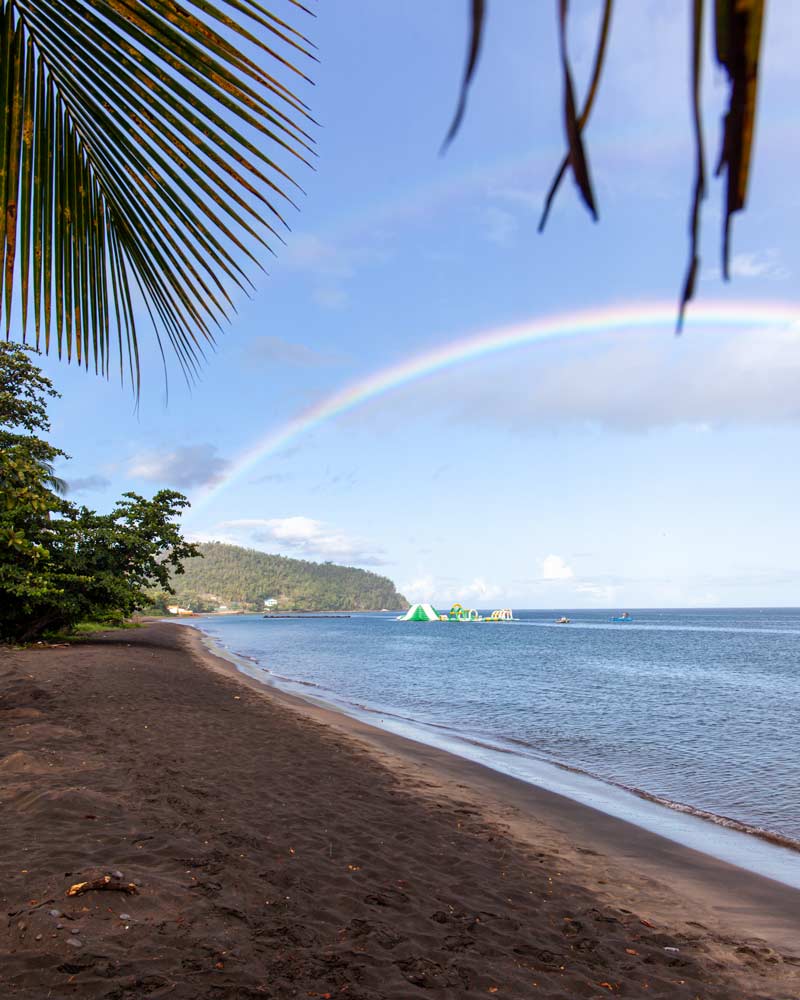

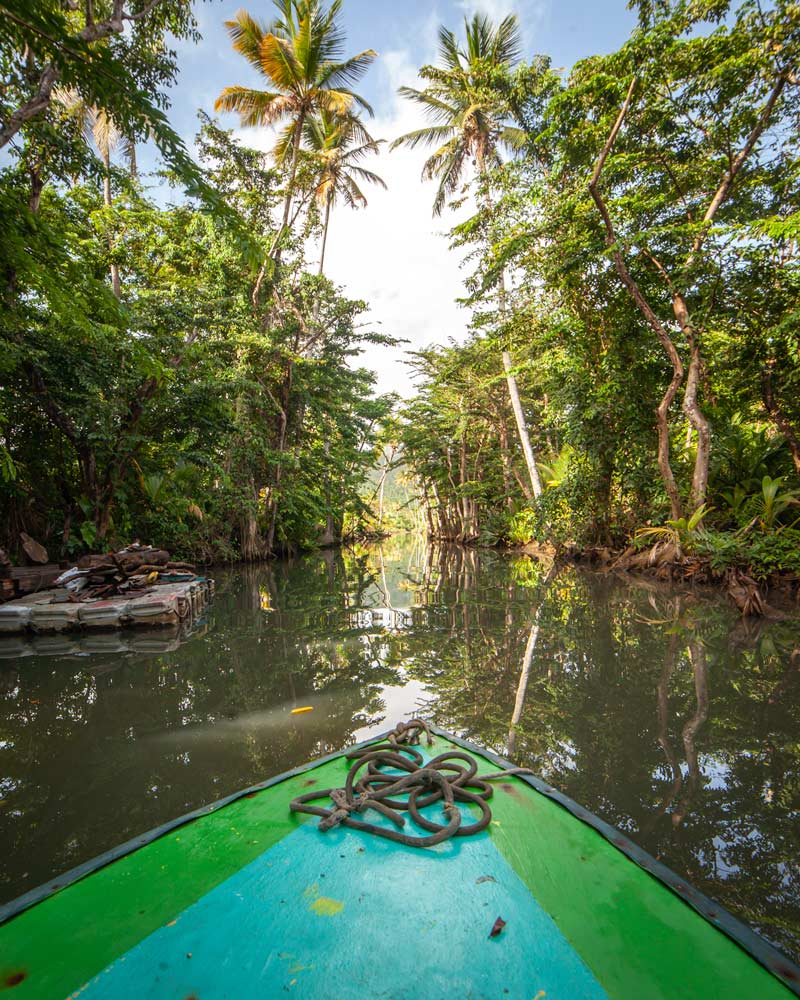

Rivers of rum
Roseau was sleepy, but Portsmouth was in even more of a slumber. Ambling along the beach, the occasional juice cafe and seafood restaurant appeared between the foliage. It’s unsurprising that this side of the island had been used as a backdrop in Pirates Of The Caribbean; I felt like a true castaway.
With little to do other than settle into a slower pace of life, I could have easily spent my final days in Dominica reading, relaxing and recharging. But there was one last location I was keen to experience: the Indian River.
From the town, it was easy enough to find a small wooden boat to take the slightly touristy ride upstream. Dipping under an overhanging canopy, the river narrowed, and my captain pointed towards some palms, announcing that this is where the Kalinago had initially lived. Other than the splashing of the oar hitting the water, all is silent; I find myself breathing in the intoxicating drug that is Dominica again.
Along the river banks, a clutch of Bush Bars — modest wooden structures where home-distilled rums in every imaginable flavour are dished up — invite you to pause for a pick me up. Stepping off the raft onto the pier, I quickly realise these are more touristy than some of the authentic tipples I’ve had elsewhere. But still, I figure it would be rude not to raise a glass to the river and order a papaya-infused rum, which is readily poured from a questionable bottle. The afternoon would be spent snoozing on the swarthy sands anyway.
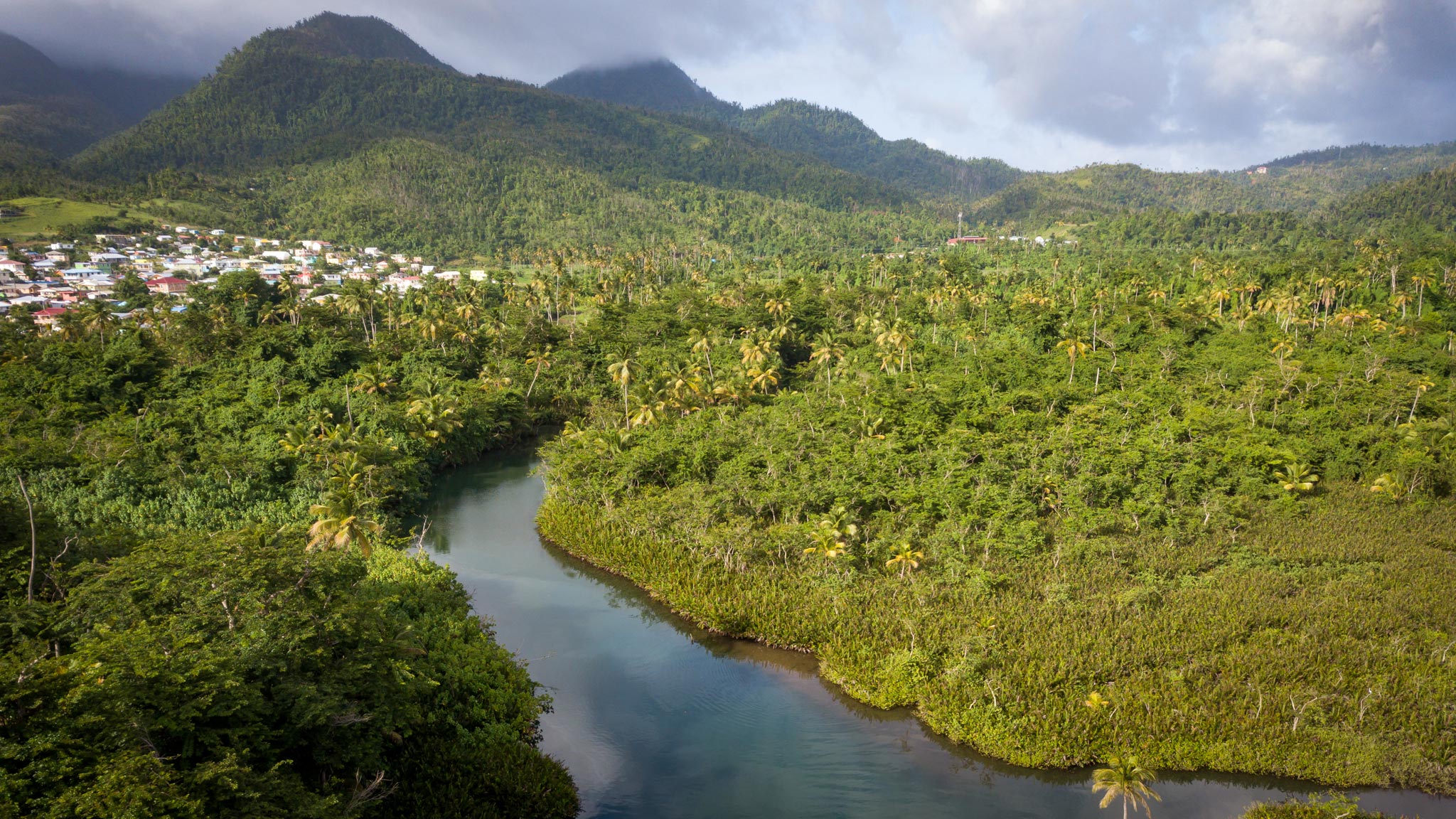

A final beach boarding call
Tears infiltrate my eyes as the ragged road pummels the car’s suspension. “It will be worth it”, Alex, my driver-turned-new-best-friend, gleefully calls from upfront. “It’s my favourite beach in Dominica”.
Swinging the car off the dirt track, Alex announces our arrival. Nestled in private land — I’d had to hand over a few dollars to take the road — Batibou Beach is about as paradisical Caribbean as you can get. A deserted, palm-fringed bay, I found myself spitting out various superlatives as I rushed to place my feet in the translucent water.
Sitting in silence on a makeshift swing, I survey the empty shoreline and feel another rush of emotion. Dominica had been an island unlike any other, and to coin a lazy travel writing term, I felt truly speechless. Luckily, there were few words left to say other than expressing my heartfelt thanks to Alex, who felt more like a lifelong friend at this point. And of course, that dreaded goodbye.
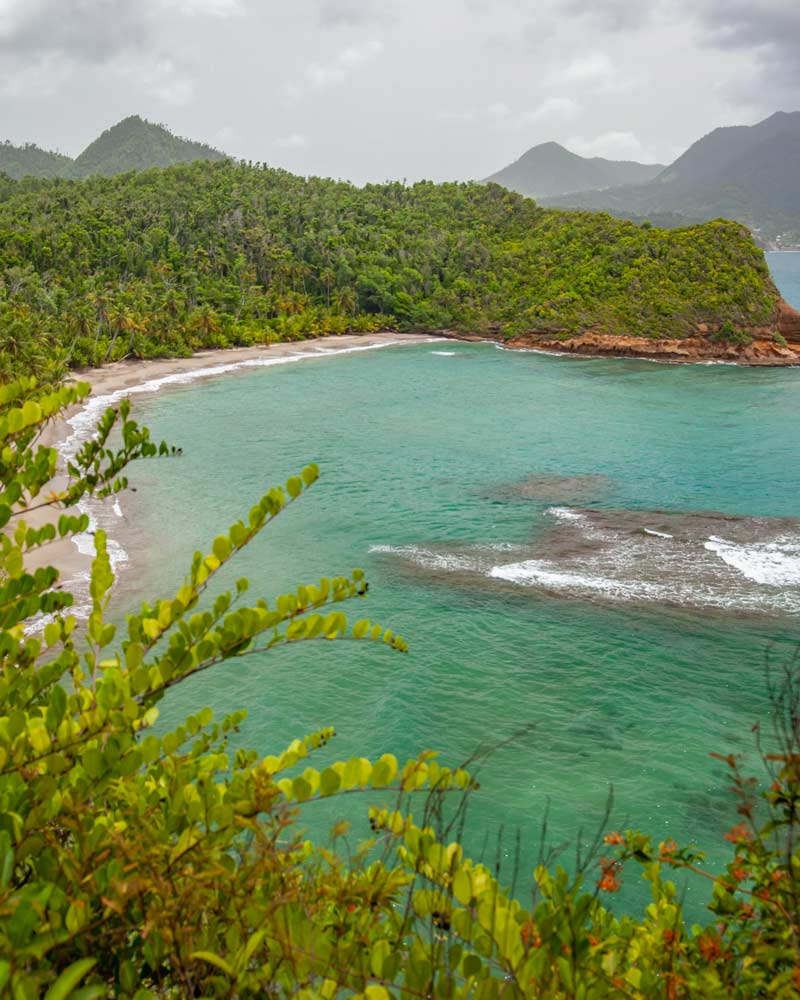

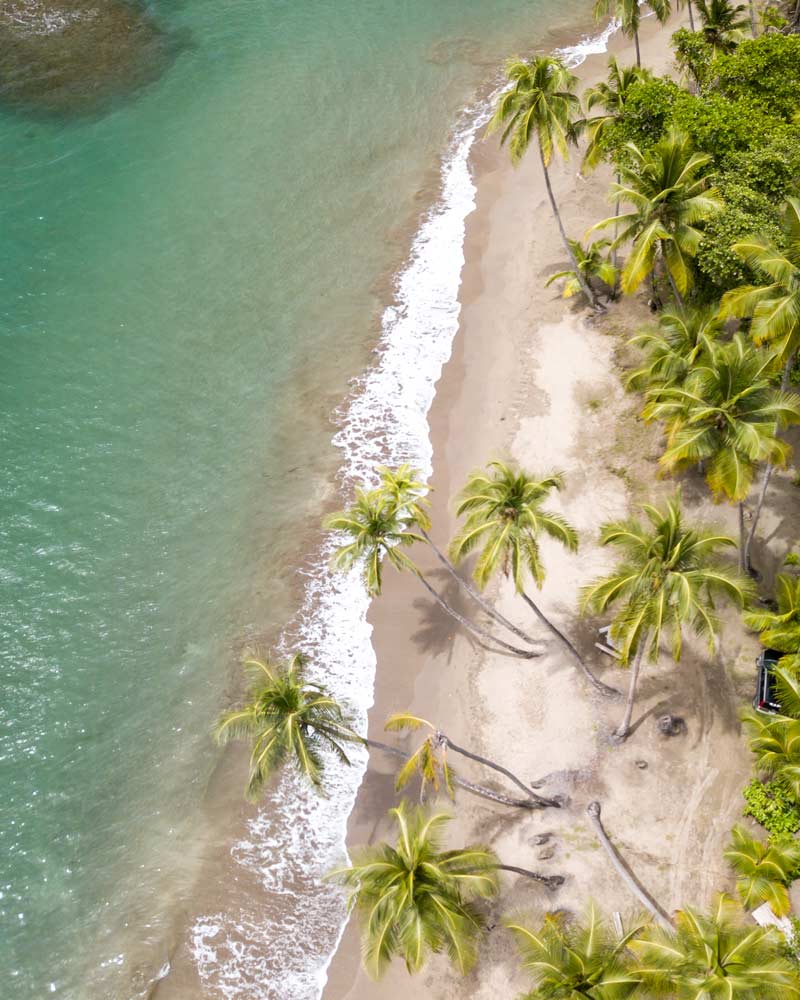

“You’ll be coming back,” Alex declared confidently as we hugged it out in the car park of the teeny airport after a final roadside snack. “Carnival is in February, or come in October for independence celebrations”, he continues, and I make a mental note of when I should start planning that inevitable second visit.
Stepping into the tiny terminal where just a few passengers are waiting, the check-in assistant questions why I’m grinning when I’ll soon be leaving her beautiful home.
“I’m not happy I’m leaving”, I reply as she hands over the boarding cards. “I’m smiling because I’ve found a paradise I didn’t believe could exist”.
Summoning the strength to mutter a final goodbye to Alex, I take a few steps into the boarding area. The small hall is souvenir-shop-free, but parting gifts weren’t necessary; this Eden was now etched in my heart, a memory that would long outlive a fridge magnet.


Read More:
Plan your trip: Dominica Travel Guide







